Let Your TMS and Machine Tools Talk Amongst Themselves
Machine shop owners are constantly looking for ways to cut costs and increase productivity. Tool management system (TMS) software, in conjunction with presetters, can accomplish both, and together they offer many advantages to a shop’s day-to-day activities. TMS software helps to organize and locate component inventory, aids assembly and location control, monitors tool life, creates setup sheets and helps in overall production planning and control.
In general, machine shop owners don’t want to put money into something that’s not making parts. However, the industry is turning a new corner. Although TMS isn’t making parts, it’s cutting down on setup time and component use, which ultimately leads to more profit for a shop. In the long run, the investment is worthwhile.
Most shops are already using tool management systems to some extent, whether it’s electronic or a physical library, and there are a variety of new systems available with varying levels of complexity. The first step is determining which system is right for your shop.
Let’s start with the basics
At the most basic level, presetters can print labels containing the job number, dimensions, offsets, tools required and so on, and an operator must then manually type the printed information into the tool offset table in the control. These CAD-generated setup sheets are very popular in machine shops right now, but manually inputting the information takes time and introduces the risk of human error.
When passing paper throughout the shop, it’s prone to being displaced or lost, potentially leaving the operator with incorrect data. Using an outdated version of a setup sheet can cost thousands of dollars in production and wasted materials.
Though this manual-entry method might work well for one-off jobs, single tool changes, or infrequent/low volume runs, Speroni has built in new technologies to further streamline the process, reducing human error and manual labor.
Building a customized tool library
For shops looking to take TMS software to the next level, new presetters present options for building a tool library specific to any shop. In the case of a complete setup, or setup of a complete turret where you are changing out every tool on the machine (usually occurring when an operator is changing from one component to another), post processing is a leap forward in error-proofing. In this system, the presetter creates a file containing offset information and sends the file out to the network, where it can be pushed to the control via DNC software.
There are many advantages to this type of system. Most importantly, an operator only needs to build a job once. After that, it will be available electronically. When a job comes in, information is entered into the presetter control to connect a job number with all the appropriate tooling. Once that’s done, it’s saved forever. A shop may not see the job for another five years, but once it comes in, you won’t have to recreate it. An operator only needs to search the presetter for the part number to find the job and the tools associated with it, and then go straight into production without skipping a beat. This is especially useful for small shops that do custom work.
Newer machine tools have the ability to find a component program file and automatically upload it. The program inputs similarly to how a component program would be input into the machine. The messaging from the presetter would only be an augmentation for the offset. This post-processing technology completely removes human error, often referred to as “fat finger syndrome,” and helps to minimize the scrap it causes.
By implementing the system, operators also have the ability to research and run job comparisons. This is done by entering a job currently running, the job running next and the tools you need to use. The system will find any tools that are common between the two jobs, and locate the remaining tools needed, whether they’re in a machine, in the tool crib or disassembled. This eases the flow, and transition from one job to the next while taking advantage of every available efficiency.
Building a tool library into the presetter reduces redundancy, manages stock and reduces tooling costs. This eases inventory management, as the system keeps close track of what tooling is needed for each job, what’s available in the shop, and what needs to be ordered.
Error-proof data
The best way to safeguard tool data is to keep it on the tool and use radio frequency identification (RFID) as a means of uploading offset information into the control. A new presetter, once it has measured the offsets at the end of the cycle, will write all of the dimensions to a tag that is inside the tool holder. In this system, the tool holder itself then carries all of its dimensions and offset details with it. Once it goes into the machine, the control is able to read the tag, and then updates its tool offset table from that tag. Even if an operator puts the tool in the wrong machine, the correct data will be preserved.
Choosing the right system for your shop
These three levels of input security do have a cost difference. Basic printing and manual entry is the least expensive option – the label printer being the single expense – but operators are subject to “fat finger” errors. The post processor is reliable and removes transcription error and “fat finger” error, but the file and tool remain two separate entities. If an operator offsets the tools for one machine and loads the post processor file into the machine, but then places the tool into a different machine or into the wrong turret pocket (which often happens), the entire processes is flawed. To avoid these mistakes, RFID is increasingly used, and it’s error-proof. The tool is measured, the tool goes onto the machine, and then the machine (whichever machine, in whichever turret pocket) reads the tool. This method is the most reliable.
When choosing a tool management system it’s important to consider whether or not a system can grow with your operation. For instance, Speroni’s offering is unique in that all the data on a TMS system can be easily transferred to a TDM system, so if and when you want to upgrade, you can. When transferring data, Speroni presetters work with the TMS and TDM systems to eliminate any duplicated data, allowing you to safely share data among your systems.
Worth the investment?
The best way to increase profitability is to cut down on overhead and increase productivity, and Speroni presetters can help a shop do both simultaneously. Presetters significantly reduce setup time, increasing productivity. They also analyze the tool outside the machining center, ensuring the insert is not chipped, worn or cracked, the cutter is not too dull and the runout isn’t too high.
Minimizing runout also increases tool life, which in turn reduces the number of cutters required for a certain job. Decreasing consumable costs and increasing productivity, mean more money in your pocket—making presetters a two-fold investment. With a variety of options, it’s just a matter of finding the most suitable presetter and TMS software for your operation.

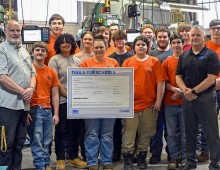


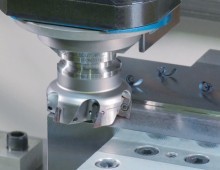
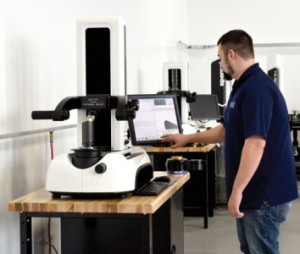
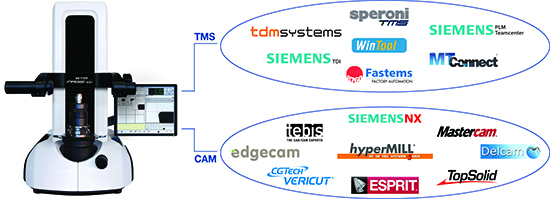
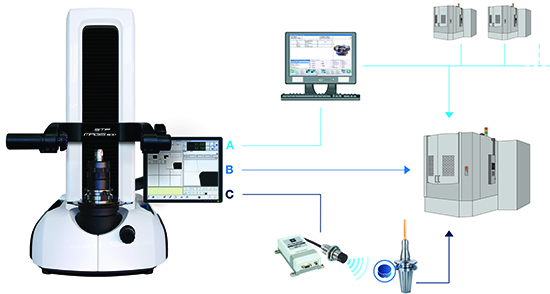
¿Te pareció interesante o útil? Haznos saber tu opinión agregando tus comentarios o preguntas a continuación.